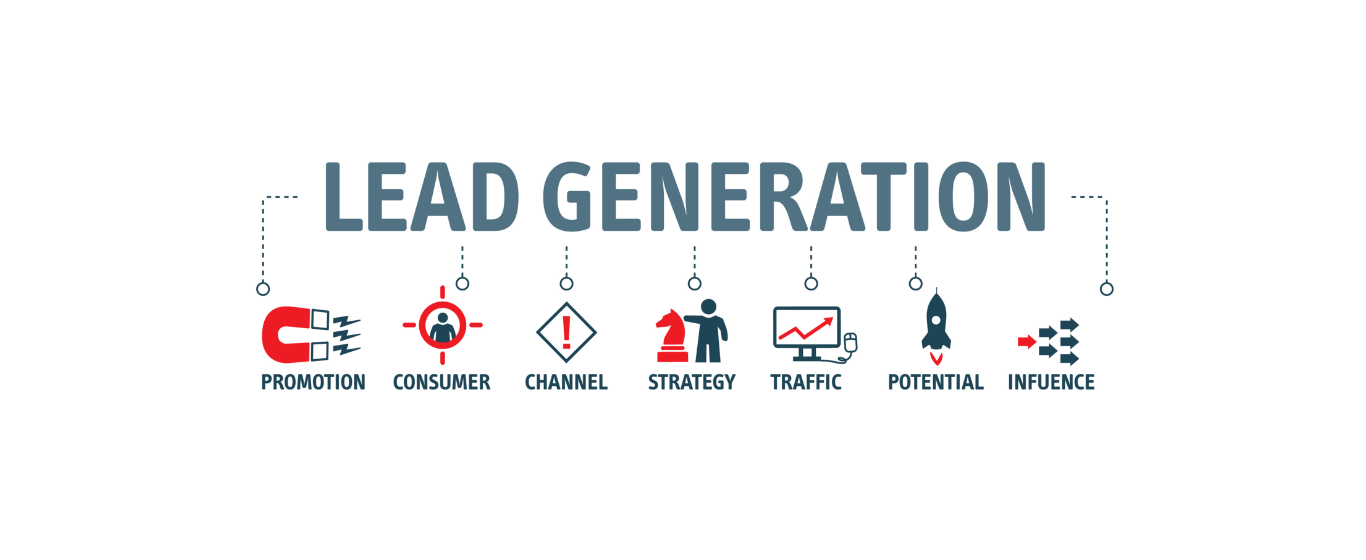
Leads are the backbone of any successful business. With leads, companies can thrive and grow. A lead-generation campaign on various marketing channels is one of the most effective methods. However, even the most well-planned marketing campaigns can only succeed if common mistakes plague them.
The consequences of such mistakes are dire as they could consume the resources and effort invested in the campaign and negatively impact the company’s reputation. Therefore, it is essential to identify and rectify these mistakes before they ruin the whole campaign.
This article will discuss the five common lead-generation mistakes marketing teams make and how to fix them for better and more effective results. By learning from these mistakes, automate your marketing, save yourself from ruining your campaign, and increase your chances of success in the lead generation game.
Also, we will discuss how business management CRM like EQUP allows you to manage and operate all your lead generation tasks from a single software platform.
What is Lead Generation, and Why is it Essential for Business Growth?

Lead generation identifies, attracts, and converts potential customers into paying ones. Simply put, it is about generating interest from prospects and nurturing those relationships until they become satisfied customers.
Marketing automation is often used to streamline lead generation processes, make it easier to manage nurturing campaigns and track prospects’ interactions with marketing content.
For instance, a marketing team might use email marketing automation tools to send targeted messages and content to leads at different customer lifecycle stages. Lead nurturing activities are often tailored to the customer’s needs and may include sending personalized emails, sales calls, or social media promotions that correspond to their needs and interests.
Successful lead generation helps companies to build brand awareness, attract new customers and grow revenue.
Why is it Essential for Business Growth?

Lead generation is pivotal in driving company growth and revenue in the competitive business world. A business can establish a continuous stream of potential customers interested in its products or services through lead generation.
The latest study metrics suggest that firms that prioritize lead generation witness a significant increase in their profits. Generating leads allows businesses to convert interested prospects into loyal customers by nurturing them with a personalized experience.
One of the considerable advantages of lead generation is that it minimizes repetitive marketing tasks for businesses, allowing them to focus on building long-term relationships with their prospects.
Furthermore, social media marketing has proven to be a powerful tool for generating leads, allowing businesses to get into a vast pool of potential customers.
In short, the importance of lead generation cannot be overstated in today’s business environment, as it helps businesses to nurture their leads effectively and provides them with valuable insights that can drive sustainable growth.
Different Types of Lead Generation Strategies

Lead-generation strategies have become the lifeblood of success for many companies. Businesses use various techniques to generate leads, some of which may work far better than others, depending on the business type, audience, and industry.
However, lead generation is challenging initially if you have a start-up. It would help if you automated your marketing processes on multiple channels to generate quality leads and avoid unnecessary repetitive tasks with the right tools and marketing automation platforms for the best results.
Below are some lead-generation strategies businesses can use to increase their customer base and revenue.
Research
One of the most fundamental lead generation strategies is thorough research. The research process involves gathering data about the target audience and competitors, understanding their wants and needs, and creating buyer personas. This information is critical in creating a robust marketing campaign that converts leads.
Search Engine Optimization (SEO)
SEO is optimizing a website to rank on top of search engine result pages (SERPs). By focusing on keywords, titles, meta descriptions, and backlinks, businesses can increase their visibility to potential customers searching for relevant products or services.
Pay-Per-Click (PPC) Advertising
PPC advertising involves placing ads on search engine result pages, social media, or other websites. Businesses can target specific keywords and audiences to generate highly targeted leads by paying only when someone clicks on the ad.
Social Media Marketing
Social media ads like Facebook, Twitter, and LinkedIn provide businesses with the opportunity to connect with their audience and generate leads through sponsored posts, social media contests, and paid advertisements. It is beneficial to small business owners to nurture prospects.
Email Marketing
Email marketing involves sending targeted and personalized emails to potential and existing customers. Businesses can increase engagement and generate leads by providing relevant and valuable content.
Referral Marketing
Referral marketing involves using current customers to refer new customers to a business. Companies can encourage existing customers to refer their friends and family by providing incentives, such as discounts or rewards.
Influencer Marketing
Influencer marketing involves partnering with individuals with a large and engaged following on social media to endorse a product or service. By leveraging the influence of a trusted individual, businesses can generate leads and increase brand awareness.
Content Marketing
Content marketing involves writing and sharing relevant, informative, and valuable content to attract and retain a clearly defined audience. By providing valuable content through blog posts, social media posts, videos, webinars, and even ad campaigns, businesses can position themselves as experts in their field and build trust with their audience.
Testing and Improvements
Testing is integral to lead generation. It involves A/B testing, which allows businesses to identify which version of a strategy works best. Additionally, companies can test variations of their ads or landing pages and optimize their campaigns to get better results. Practical improvements can move lead gen through to better outcomes and reduce marketing efforts in lead conversion.
In conclusion, lead generation strategies are crucial in converting leads to customers. Effective implementation of these strategies provides businesses with opportunities to grow and achieve maximum success. Companies can create powerful campaigns that convert leads into loyal customers by utilizing these techniques.
Common Lead Generation Mistakes

Lead generation is a crucial component of any successful business. There are numerous tactics and channels available for attracting potential customers. However, despite these multiple options, companies still make common mistakes, hindering their possible progress. To avoid these pitfalls, here are some common lead generation errors and ways to get back on the right track:
Failing to Define the Target Audience Clearly
One common mistake businesses make is failing to define their target audience clearly. A study by HubSpot found that “buyers are twice as likely to consider a brand’s products or services when companies target outreach to their needs, objectives, and pain points.” That shows that businesses that take the time to define their target audience can take advantage of opportunities to attract potential customers.
A prime example occurred when PepsiCo launched a new premium brand called “Driftwell” during the pandemic, aiming to target work-from-home employees and stressed-out consumers.
However, despite their good intentions, the company failed to define its target audience, as they quickly discovered consumers didn’t know what “Driftwell” even stood for or how it differed from their existing product lines. As a result, PepsiCo revised its approach by clearly defining its target audience, making critical changes to package design and presentation, and rolling out a comprehensive marketing campaign that resonated with its target audience.
Relying Too Much on a Single Lead Generation Channel
Another common mistake in marketing for lead generation is relying too much on a single lead generation channel. A recent survey by Ascend2 found that “75% of marketers state that their biggest challenge is generating leads.”
As a result, many businesses need to pay more attention to a single lead generation channel, such as email marketing or social media advertising, to drive all their leads. However, if this channel fails, the business can experience a significant lead drop, losing out on potential sales and growth.
A well-known example occurred when Facebook changed its algorithm, which directly affected organic reach for businesses on the platform. For businesses that relied solely on Facebook for lead generation, this change significantly impacted their ability to generate leads and decreased sales and revenue.
Businesses should diversify their marketing channels and take advantage of all the options to find leads to ensure success. This diversification can include social media platforms, online advertising, content marketing, email marketing, etc.
Doing so will allow businesses and many marketers to reach potential customers and generate leads from multiple sources. And it also helps to compare the different channels in terms of performance and results and to know which one is better working for the particular lead generation campaign.
Finally, businesses should also track their lead-generation efforts and measure the performance of each channel. That will allow them to understand better which channels are more effective in generating leads so that they can focus on optimizing them.
Not Having a Well-Optimized Landing Page.
The third mistake is needing a well-optimized landing page. A landing page is a web page that a visitor lands on after clicking on a link, usually from an advertisement or search engine results page.
A well-optimized landing page has a clear, concise message, strong call-to-action (CTA), and easy-to-navigate design. A good landing page must have a maximum of one or two CTA’s to ensure visitors complete it.
However, a landing page lacking these elements can negatively affect lead generation efforts as visitors may not convert or take the desired action. A prime example happened when Mission Federal Credit Union launched its new credit card and ran ads directing customers to its landing page.
Despite having a great offer, the landing page could have been better designed, with too much text and insufficient CTAs. As a result, visitors were not enticed to take action, and the mission needed to generate more leads from the campaign.
According to studies, businesses with 10 to 15 landing pages see a 55% increase in leads. Furthermore, companies with over 40 landing pages generate 12 times more leads than those with only one to five landing pages.
One example of a well-optimized landing page is EQUP’s sign-up page. They have a clear, concise message, strong CTA, and easy-to-navigate design. The page has a clean layout with a bold headline that captures the visitor’s attention, explaining the benefits of signing up. Additionally, they offer a free service, highlighted in blue, to create a sense of urgency.
Neglecting to follow up with leads promptly
Businesses often make this mistake because they assume that leads will return on their own. However, studies show that 50% of sales go to the first company that responds to the customer. In addition, 80% of sales require at least five follow-up calls before purchasing.
Examples of companies that excel in lead follow-up are EQUP and Salesforce. Their automated marketing system sends a follow-up email to potential customers within minutes of their initial contact. EQUP is a customer contact management software free that includes email integration allowing personalized messages as a benefit and creating a strong CTA to book a demo or call with a sales representative.
Overlooking the Importance of Lead Nurturing
The last mistake is overlooking the importance of lead nurturing. Lead nurturing builds relationships with potential customers by providing relevant and valuable information. This process involves proactively reaching out to leads, educating them on your product or service, and addressing any queries or concerns they have. According to studies, companies that nurture leads generate 50% more sales at a 33% lower cost.
A few examples of companies that excel in lead nurturing are Hubspot and EQUP. They provide educational content in ebooks, webinars, a knowledge base, and blog posts, all aimed at helping potential customers understand inbound marketing. Furthermore, they have a personalized approach to lead nurturing, sending tailored content based on the lead’s behavior and preferences.
In conclusion, businesses must avoid ordinary lead generation and marketing mistakes to maximize their efforts. By studying successful companies, such as EQUP, MailChimp, Salesforce, and Hubspot, businesses can learn how to implement these strategies effectively and improve their marketing and lead magnet efforts.
How to Fix Lead Generation Mistakes

Lead generation is critical to any business’s sales and marketing strategy. However, even the most seasoned marketers can make mistakes that hinder their ability to generate high-quality leads. Fortunately, identifying and addressing these mistakes is possible by adopting an informed and data-driven approach.
Conducting Deep Market Research to Understand the Target Audience Better
One crucial step to mitigate these mistakes is conducting market research to understand the target audience better. This process helps businesses identify their potential customers’ needs, preferences, pain points, and motivations. By understanding this information, companies can tailor their marketing-qualified lead-generation strategies to their target market’s needs and interests.
For example, if a company sells organic beauty products, it might conduct market research to determine its target audience’s interest in eco-friendly, natural products. They could then use this information to develop content and messaging that appeals to this audience’s preferences. That could include creating a blog post on the benefits of organic skincare, running Facebook ads targeting individuals interested in sustainable living, or partnering with influencers in the eco-friendly beauty space.
Diversifying Lead Generation Channels to Reach a Wider Audience
Another way to fix lead generation mistakes is by diversifying channels to reach a wider audience. Relying solely on one channel or strategy can limit a business’s reach and effectiveness. By utilizing multiple channels, companies can target different audiences with tailored messaging and increase their chances of generating high-quality leads.
For instance, a real estate company may have traditionally relied on referrals and print advertising to generate leads. However, they could increase their reach by diversifying their lead generation channels. That could involve creating a solid social media presence, partnering with local businesses to increase their referral network, or using email marketing campaigns to reach potential buyers. By expanding their channels, the real estate company can cast a broader net and improve their chances of increasing lead generation.
Furthermore, diversifying lead generation channels provides measurable business metrics that can guide decision-making. For example, a business could track the number of leads generated from different channels, the cost per acquisition, and the conversion rate. By doing so, they can quickly identify the most effective channels and adjust their strategies accordingly.
Optimizing Landing Pages to Increase Conversions
One of the most common lead generation mistakes is having poorly designed landing pages that fail to convert visitors into leads. However, businesses can optimize their landing pages to increase consumer engagement to fix this. This optimization involves creating landing pages with a clear value proposition, simple yet effective call-to-action (CTA), and relevant information that entices visitors to provide their contact details.
For instance, Company X redesigned its landing page and included a simplified form with only three fields: name, email, and phone number. Due to the optimized landing page, Company X saw a 25% increase in lead conversions compared to the previous design.
Implementing an Automated Lead Follow-Up System
Another mistake businesses make is not following up on leads promptly. This results in missed opportunities and lost sales. To prevent this, companies can implement an automated lead follow-up system that engages leads with personalized emails and reminders.
Companies can send automated messages through email campaigns by using marketing automation tools for nurturing leads to paying customers. These automated workflows automate repetitive tasks and other marketing processes like behavioral targeting, social media posting, drip campaigns, and other ad campaigns for lead follow-up.
For instance, Company Y implemented an automated lead follow-up system and saw a 50% increase in lead conversions compared to manual follow-ups.
Businesses can fix common lead generation mistakes by implementing the right strategies, resulting in higher quality leads and improved sales performance through market research and diversification.
Developing a Lead Nurturing Strategy to Build Relationships and Increase Conversion Rates
As a business owner, you must automate your marketing to build relationships with your leads through marketing software to increase conversion rates. Unfortunately, many businesses only focus on the sales pitch and neglect the importance of building a rapport with leads.
Establishing a lead nurturing strategy based on customer behavior that includes personalized content, targeted emails, and engaging social media interactions can help businesses build relationships with potential customers. These tailored messages provide a personalized experience and convince qualified leads to customers and then repeat customers.
Maximizing Lead Generation Results: Strategies and Techniques for Optimal Success
Lead generation campaigns are crucial for businesses seeking to attract and convert potential customers into paying ones. However, measuring the success of these campaigns can be challenging, and improving their effectiveness can be even more daunting. Here, we will explore the best strategies and techniques for maximizing lead generation results.
How to Measure the Success of Lead Generation Campaigns?
The first step to maximizing lead generation results is to measure the success of your campaigns. You can track several metrics, such as conversion rates, open and click-through rates, cost per lead, and return on investment (ROI). These metrics will help you identify what is working and what is not. It’s essential to track these metrics consistently over time to measure your progress accurately.
Analyzing Lead Data to Identify Areas for Improvement
Once you have gathered data on your lead generation campaigns, it’s essential to analyze them to identify areas for improvement. Look for patterns in your data and determine what is working well. For example, specific channels are providing more qualified leads than others. Or, certain messaging or offers are more effective than others. Use this information to make data-driven decisions to increase conversion rates and improve your lead-generation strategy.
Creating Compelling Offers to Attract and Convert Leads
Creating compelling offers is one of the most critical aspects of successful lead generation. Your proposal should value your potential customers while encouraging them to act. That could be anything from a free trial, a limited-time discount, or exclusive content. Spend time researching your target audience to understand what they value, and use that information to craft irresistible offers that convert.
Utilizing Social Proof to Increase Trust and Credibility with Potential Leads
Social proof is a powerful tool for building trust and credibility with potential leads. These involve using customer reviews, testimonials, and other forms of social proof to showcase the positive experiences of your current customers. As a result, social proof can help potential customers feel more confident in your product or service, increasing their willingness to convert.
Leveraging Customer Feedback to Improve Lead Generation Strategies
Finally, marketing professionals must continuously leverage customer feedback to improve their lead-generation process. Regularly solicit feedback from your current customers about their experiences, preferences, and pain points. Use this feedback to refine your messaging, offers, and overall strategy to meet your target audience’s needs better.
Conclusion
You can avoid these five common lead-generation mistakes with the right strategy and guidance. As a result, you’ll be able to generate more leads efficiently, producing better results, having reliable methods and the right tools to create quality leads.
Start by focusing on your content, website design, and marketing automation before anything else to set yourself up for success. Investing time into prospecting techniques, like engaging with potential customers, will also help streamline your lead generation process.
By being mindful of these common mistakes and taking proactive steps to fix them, businesses can ensure they’re making progress that helps grow their customer base.